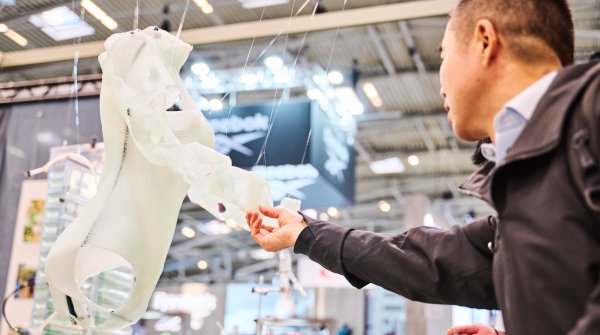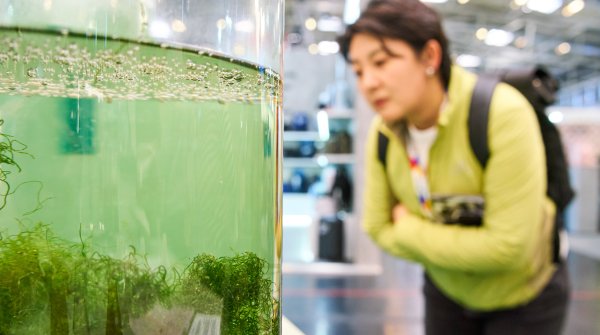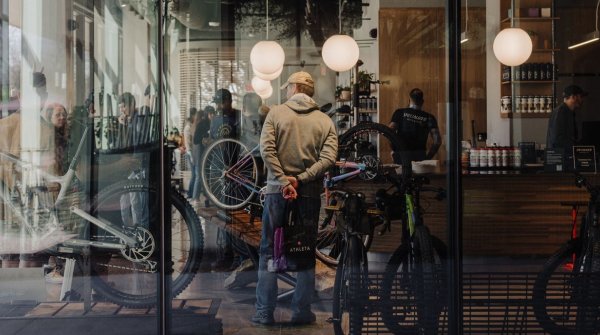The willingness to pay a premium for sustainable products is waning. The current consumer behavior poses a real challenge for many companies. Especially the sports industry has invested heavily in making their products more sustainable.
At the OutDoor by ISPO, two market experts presented recent research findings on “green fatigue” in consumer behavior, international differences, and their strategies: Bastian Graber is Senior Manager of Client Development at the US-based market research firm Circana. Fredrik Ekström is a Brand Strategist and founder of Above The Clouds and has surveyed 2,500 Scandinavian consumers and conducted qualitative interviews with 32 brand representatives for his analysis.
“Green fatigue” is a response to the overwhelming presence and pressure of sustainability demands at a time when other economic concerns take precedence. Consumers are weary of the constant focus on environmental issues and, therefore, are less inclined to prioritize sustainability when facing financial or emotional stress.
Living costs are continuously rising, particularly for food and beverages. Bastian Graber from Circana says, "Compared to January 2021, we are talking about a 26.4 percent increase." German households allocate about 10% of their budget to these categories, relatively low compared to the European average.

Four out of five consumers in the EU5 countries (Germany, France, Italy, Spain, the UK) adjusted their purchasing habits in the second half of 2023. Graber noted that consumers are leaning more on special offers or delaying non-essential purchases. In Spain, there is a notable trend towards cheaper products.
A silver lining: Despite rising prices, 82% of 18- to 34-year-olds are willing to pay more for sustainable sports shoes and clothing, up by four percentage points compared to the previous year. This trend is also evident in the US, where young consumers are willing to pay up to 10% more for eco-friendly products. However, across all age groups, willingness has decreased.
Young adults and increasingly those over 35 are choosing second-hand fashion more frequently. The search for deals and the desire for sustainability drive this trend. The projected global revenue for second-hand fashion is $350 billion for 2028, up from $197 billion in 2023.

Fredrik Ekström found that most brands underestimate the good intentions of consumers: “They have disproportionately high expectations of laws and regulations as the only solution for the future.” The Green Deal and the EU’s Corporate Sustainability Due Diligence Directive (CS3D) place significant demands on companies, but smart communication is necessary to engage with consumers, where 8 out of 10 trigger positively on sustainability initiatives, but “sustainability” is increasingly fragmented in the head of the consumer and there is no “one solution label” to succeed.
According to Ekström, the (8 out of 10) consumer population can be segmented into three archetypes interested in sustainable products and messaging based on three factors:
- Dedicated Pioneers (12 %): driven by a holistic approach to sustainability and seek brands that share and communicate their values.
- Anxious Activists (28 %): driven by tangible results and “hard facts,” such as product durability, manufacturing information, and sustainable transformation results.
- Eco-Swingers (37 %): driven by storytelling and being able to show that they are “in the know”, engaging narratives and aesthetic images about the brand, sustainability co-labs and symbolic limited edition products.
An especially intriguing fact from Ekström’s research is that the social aspect of sustainability has remained a top characteristic for four years, when the consumer state what characterizes a sustainability dream brand. “Takes good care of its employees” and “make sure everyone gets paid correctly throughout the value chain” is the two top requirements from the consumer. Followed that, consumers expect companies to take responsibility for the planet and society and convey a positive outlook for the future. This creates a matrix of Social, Planetary, and Future Trust focus areas that brands can use as a messaging compass.
- ISPO awards
- Mountain sports
- Bike
- Design
- Retail
- Fitness
- Health
- ISPO Job Market
- ISPO Munich
- ISPO Shanghai
- Running
- Brands
- Sustainability
- Olympia
- OutDoor
- Promotion
- Sports Business
- ISPO Textrends
- Triathlon
- Water sports
- Winter sports
- eSports
- SportsTech
- OutDoor by ISPO
- Heroes
- Transformation
- Sport Fashion
- Urban Culture
- Challenges of a CEO
- Trade fairs
- Sports
- Find the Balance
- Product reviews
- Newsletter Exclusive Area
- Magazine






